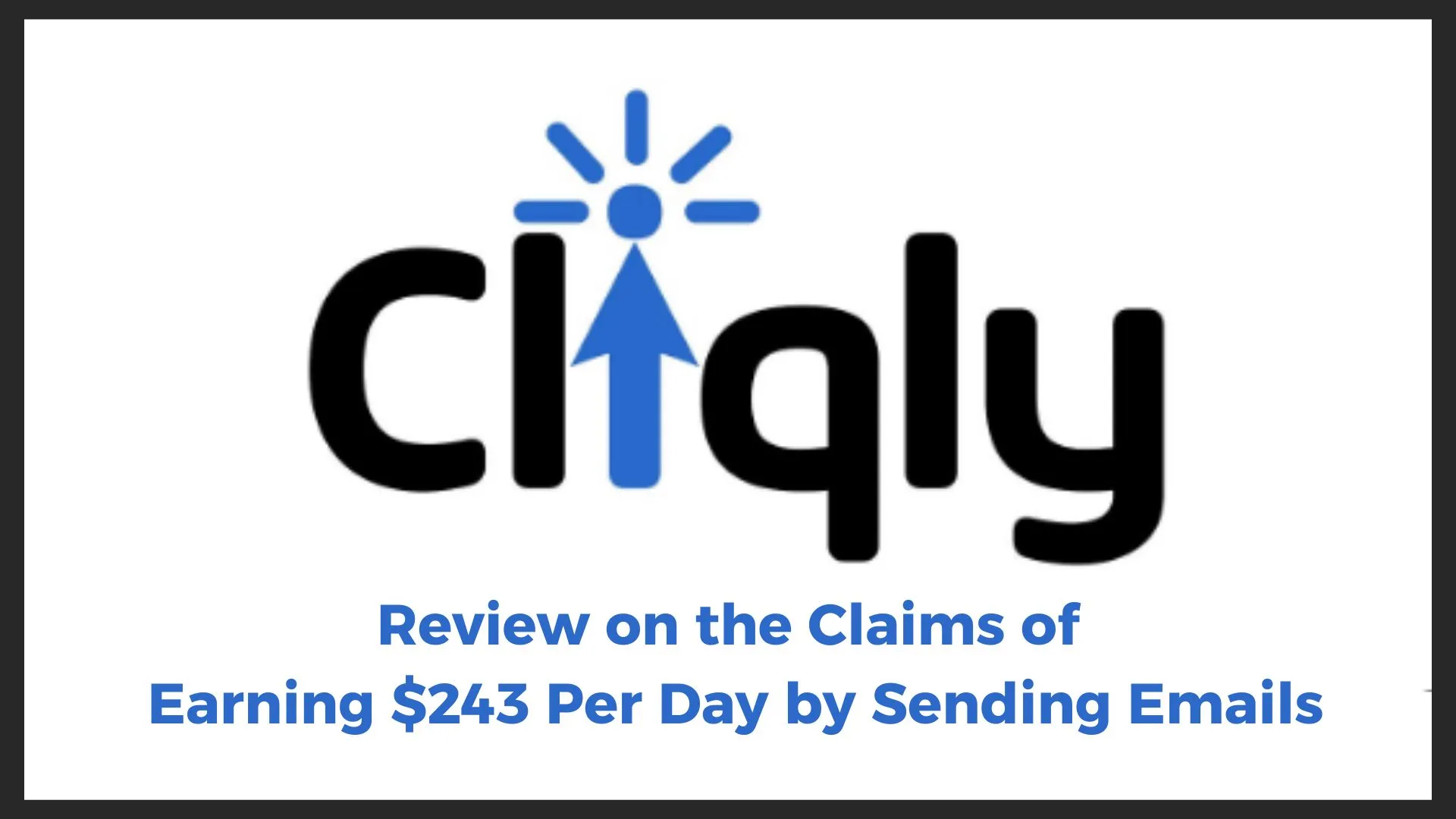Introduction
In the fast-paced world of online opportunities, Cliqly has emerged as a potential goldmine, promising a simple way to earn $243 per day by sending emails. As someone who frequently navigates the online landscape, I’ve noticed the growing hype around Cliqly. Many have approached me with inquiries, questioning the legitimacy of these claims. In this detailed Cliqly review, I aim to dissect the platform’s promises and provide you with a transparent assessment. While there is potential for earnings, critical considerations and concerns must not be overlooked. Join me as we unravel the truth behind Cliqly’s allure and evaluate whether it’s the right opportunity for you.
AD
Cliqly Overview

Cliqly purports to be a platform where users can grow their business by sending 1.4 million emails monthly to pre-built lists with just a 10-minute investment. The initial impression suggests a straightforward process, enticing users to explore further. However, delving deeper into the system reveals intricacies that demand careful evaluation.
The Landing Page Dilemma
Upon exploring Cliqly’s offerings, users are directed to a landing page emphasizing urgency, claiming the need to join within a specified timeframe. This urgency, often a marketing tactic, shouldn’t be a cause for concern, as the timer resets for new users or browsers. However, the real question lies in whether the potential earnings of $243 per day are attainable through the advertised simplicity of sending emails.
Cliqly Business Model Analysis
- The Free Membership Deception
One of the primary concerns arises from the misleading notion of Cliqly being entirely free. While initial membership comes without a charge, a hidden monthly fee of $97 and the necessity to purchase credits for additional emails and subscribers emerge. This discrepancy raises ethical questions about the transparency of the platform. - Logical Inconsistencies
Upon closer scrutiny, the logical coherence of Cliqly’s business model is questionable. The platform urges users to send emails on behalf of others who allegedly have an extensive subscriber base. However, the rationale behind not utilizing Cliqly themselves for sending emails raises eyebrows. Furthermore, the promise of earning 10 cents per click on links in the emails raises concerns about the actual efficacy of this method. - Subscriber Saturation and Conversion Challenges
Cliqly’s encouragement to send out emails to potentially thousands of subscribers, coupled with the distribution of free subscribers, unveils a major challenge – subscriber saturation. Sending emails to individuals who are bombarded by similar messages from numerous Cliqly users diminishes the chance of meaningful engagement. Without a genuine connection, the conversion ratio is likely to be minimal, jeopardizing the claimed ease of earning. - Compliance and Legal Implications
Sending emails to individuals who allegedly requested information introduces compliance concerns. The lack of verification and transparency regarding consent raises potential legal issues. In the realm of email marketing, strict adherence to consent regulations is imperative, and Cliqly’s apparent oversight in addressing this aspect becomes a red flag.
Ad
Deconstructing Earning Examples
Earning examples often circulate online, showcasing substantial amounts attributed to Cliqly’s system. However, it’s crucial to distinguish between earnings and actual profit. Referral commissions play a significant role in these examples, overshadowing the verifiable profitability of the email-sending endeavor. Moreover, individuals may not disclose the invested amount in credits, misleading potential users about the true nature of their earnings.
The Long-Term Viability and Learning Aspect
Participating in Cliqly might yield short-term gains, but the lack of tangible skills and a reliance on a specific system raises concerns about the sustainability of this venture. In contrast to genuine online businesses that empower users with skills and adaptability, Cliqly appears to offer a limited, one-dimensional approach that may not withstand unforeseen challenges.
The What-If Scenario
Considering the uncertainties of online platforms, the question of Cliqly’s potential closure looms large. In the event of shutdown, users may be left with a downloaded email list but no viable business or transferable skills. This poses a significant risk, especially when compared to ventures that equip users with enduring skills for the online landscape.
Read More: Marketing Ebooks: 10 Powerful Resources to Master the Game
Ad
Conclusion
In conclusion, my examination of Cliqly reveals a platform with potential earnings but marred by significant concerns. The misleading “free” membership, logical inconsistencies, saturation challenges, compliance issues, and the lack of long-term viability raise red flags. While earning examples circulate, they often emphasize referral commissions, masking the true profitability of sending emails.
I advocate for transparency and urge individuals to critically evaluate opportunities like Cliqly. The online realm is rife with both promising ventures and pitfalls, necessitating a thorough understanding of the pros and cons before embarking on any opportunity. In my experience, long-term solutions built on genuine skills and adaptability outweigh the allure of quick but uncertain gains.
Ultimately, the decision to invest in Cliqly rests with you. This review aims to provide a balanced perspective, allowing you to make an informed choice in the ever-evolving landscape of online opportunities. Share your thoughts, experiences, and opinions responsibly in the comments, fostering an open and constructive dialogue. As always, exercise caution, prioritize transparency, and explore avenues that empower you for the long haul in the dynamic world of online ventures.




